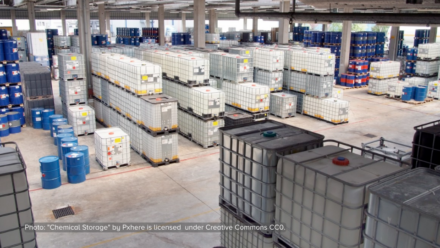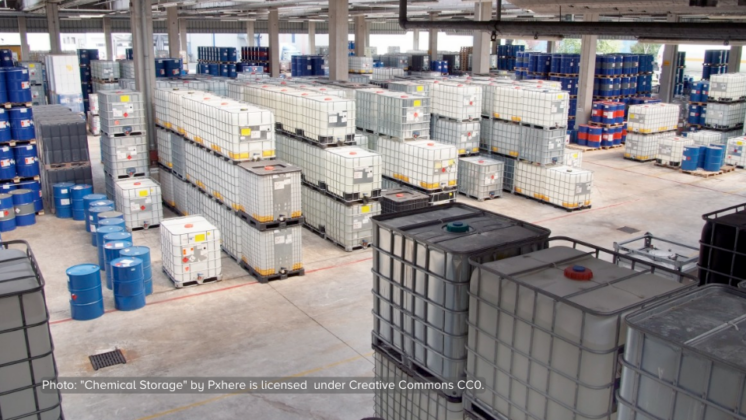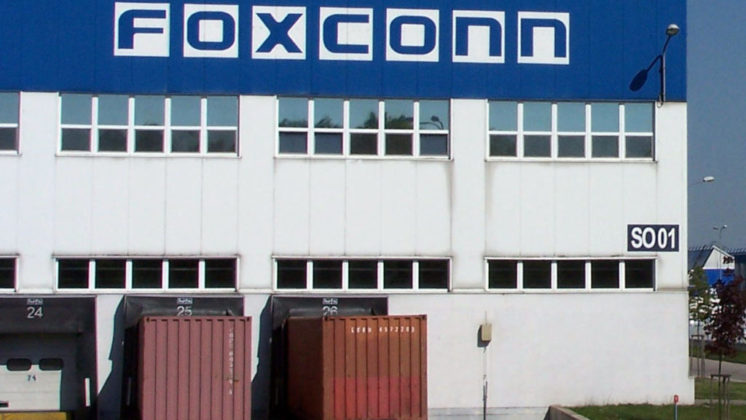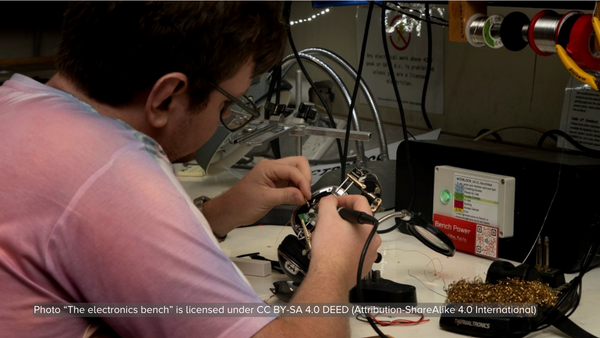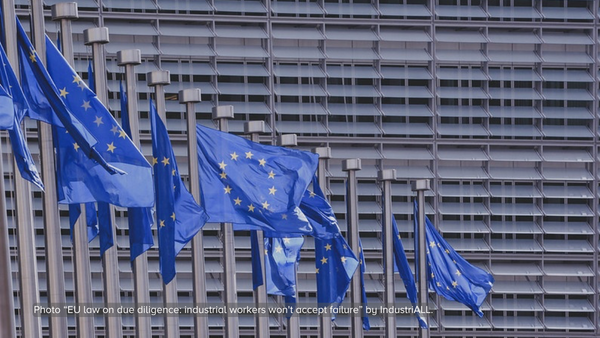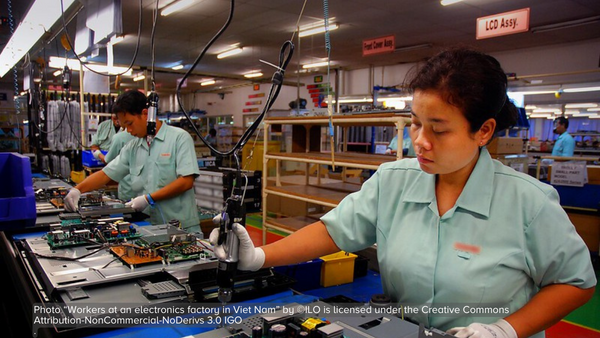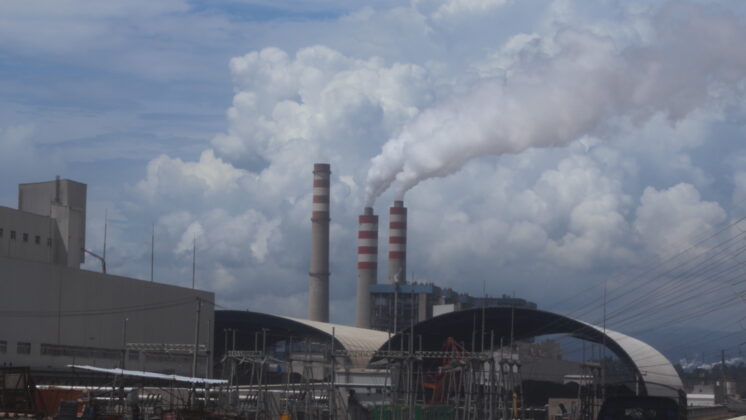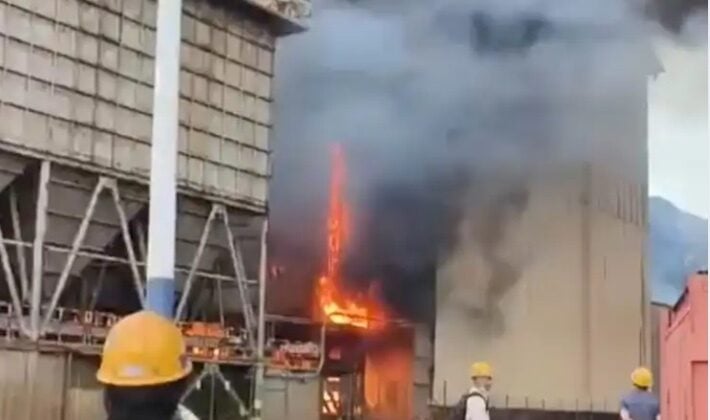For more than four decades, people in Silicon Valley in California, United States, have known that the manufacture of computer chips requires many toxic chemicals and that workers have been getting sick from exposure to those chemicals. At the same time, we’ve also known that the electronics industry has built a ‘fire wall’ against unions and resisted efforts by workers to organize to protect their health, wages and working conditions. Lessons learned in Silicon Valley need to be shared throughout Asia since electronics manufacturing is now centred there. That is why we are building a global movement to challenge the chip.
'Why we are building a global movement to challenge the chip', article by Ted Smith, published in the latest Asian Labour Update Issue No. 77, by the Asian Monitor Resource Center AMRC
For more than four decades, people in Silicon Valley in California, United States, have known that the manufacture of computer chips requires many toxic chemicals and that workers have been getting sick from exposure to those chemicals. At the same time, we’ve also known that the electronics industry has built a ‘fi re wall’ against unions and resisted efforts by workers to organize to protect their health, wages and working conditions. Lessons learned in Silicon Valley need to be shared throughout Asia since electronics manufacturing is now centred there.
http://www.amrc.o
Here are some key examples:
1. The right-to-know is essential!
Information is the best defense!
In Silicon Valley, as in Asia, electronics production workers were not informed about the toxic hazards for themselves and their families and since many were migrant workers from rural areas, they had no way of knowing about these hazards. Early efforts in Silicon Valley included documenting the chemical hazards, informing workers through publications and a telephone ‘hotline’, organizing victims into a support group called ‘Injured Workers United’, and providing medical and legal support for affected workers. While electronics executives were uniformly hostile to unions2 (people who tried to organize unions were often fired and/or harassed), organizing to protect workers’ health was more difficult to suppress. While industry executives could complain about the evils of unions, they found it more difficult to discredit people coming together to organize for safer
working conditions.
2. The right to say no
The Campaign to end the miscarriage of justice.
The growing awareness that toxic chemicals were causing reproductive harm in the community gave rise to a demand for additional health studies to assess the extent of miscarriages and birth defects for electronics workers. Three separate epidemiological studies all demonstrated a high rate of miscarriages amongst semiconductor workers, leading to the demand to ban the use of glycol-ethers and other reproductive toxins. Women began to demand that they be provided a safe work place, particularly when they were pregnant or contemplating pregnancy.
3. The right to act
Taking workers concerns directly to the Semiconductor Industry
In 2002, after years of organizing in Silicon Valley and other high-tech centres in the US, we organized an international gathering to bring together people from other parts of the world to share stories and strategies and to form a common agenda. This is where we formed the International Campaign for Responsible Technology (ICRT). We were all energized to learn that we had much in common and shared similar goals. We also realized that we were facing the same opposition and denial from industry officials who ignored and minimized the concerns that we were witnessing. We decided to take our unifi ed message directly to the source of the problem – to the headquarters of the Semiconductor Industry Association (SIA), which is the trade association that acts as the global lobby for the industry. We showed up as a large group and confronted George Scalise, President of the SIA, and made sure that he listened to the first-hand accounts from people from all around the world who were suffering from cancer, birth defects, and abuses of workers’ rights. We demanded that the industry protect its workers wherever they are – in the US, Scotland, Taiwan, China, etc. But the industry is still a long way from providing a safe workplace where workers can survive with dignity and justice. These demands still need to be acted upon all around.
4. Moving from reaction to precaution
Why we need to get ahead of the curve
One of the most difficult challenges of dealing with the electronics industry is that it is both extremely powerful and changes very rapidly. In little more than a single generation, it has become one of the most dominant economic engines on the planet and has developed a wide variety of products that have become essential to communications, defense as well as the consumer economy. No wonder that governments compete for new high-tech development and are uninterested in regulating the ‘golden goose’ that sees itself as the gateway to the future. Moreover, since it is still governed by ‘Moore’s law’ (which proclaims that every 18 months each new generation of technology will be twice as fast, twice as small and twice as cheap),5 the industry changes so rapidly that by the time you fi gure out what the main challenges or hazards are, the technology has moved on to the next generation and is creating new problems even before the older ones have been understood or addressed. If ever there was a poster child for the need for the precautionary principle, the electronics industry presents itself as Exhibit A! If we spend all of our effort trying to clean up the messes created yesterday, we will never get ahead of the curve. Likewise, if we always have to wait for the ‘body count’ we will continue to be overwhelmed by too many funerals. We need to develop better ways to screen new materials before they are introduced into the workplace and we need to establish increased bargaining power to make sure that management listens to the concerns of the workers rather than just give lip service.
5. Forming worker-community-environmental coalitions is necessary.
Early organizing efforts to expose the toxic underside of electronics production in Silicon Valley was essential in building awareness and piercing the ‘clean industry’ mythology, but it was the linkage to community and environmental pollution that really got people mobilized to make the industry more accountable. Even when the local media began to cover the growing occupational illnesses, most people still ignored it if they weren’t directly and personally affected. But when the toxic chemicals leaked into our groundwater (which is our drinking water supply) and residents started giving birth to babies with serious birth defects, the residents came together to demand that the industry change its practices. And often it was the workers in the lead, who were suffering
from ‘double exposure’ both on the job as well as in the community. That’s when we started passing laws to provide greater protections and established the legal right-to-know about which toxic
chemicals were being used in which factory. We made the point that there was no difference between occupational health and environmental health – that people were getting sick from exposure to the same toxic chemicals, whether it was in the workplace or in the community. It was the combined power of the broad coalition that was able to generate enough people power to make changes.
Now that the industry has become truly global, we need to further develop our people’s networks to also become truly global. More than ever, it’s true that an injury to one is an injury to all – that’s why the cancer cluster at Samsung affects us all; and that’s why the rash of suicides at Foxconn is a tragedy for all of us. And it is only through our combined resources and
common strategies that we stand a chance to bring accountability and sustainability to this most powerful industry. That’s why it is essential that we build stronger links between our various networks, especially the newly renamed Asian Network for the Rights of Occupational and Environmental Victims (ANROEV), the European Work Hazards Network (EWHN) and the National Council on Occupational Safety and Health (COSH) in the U.S.

